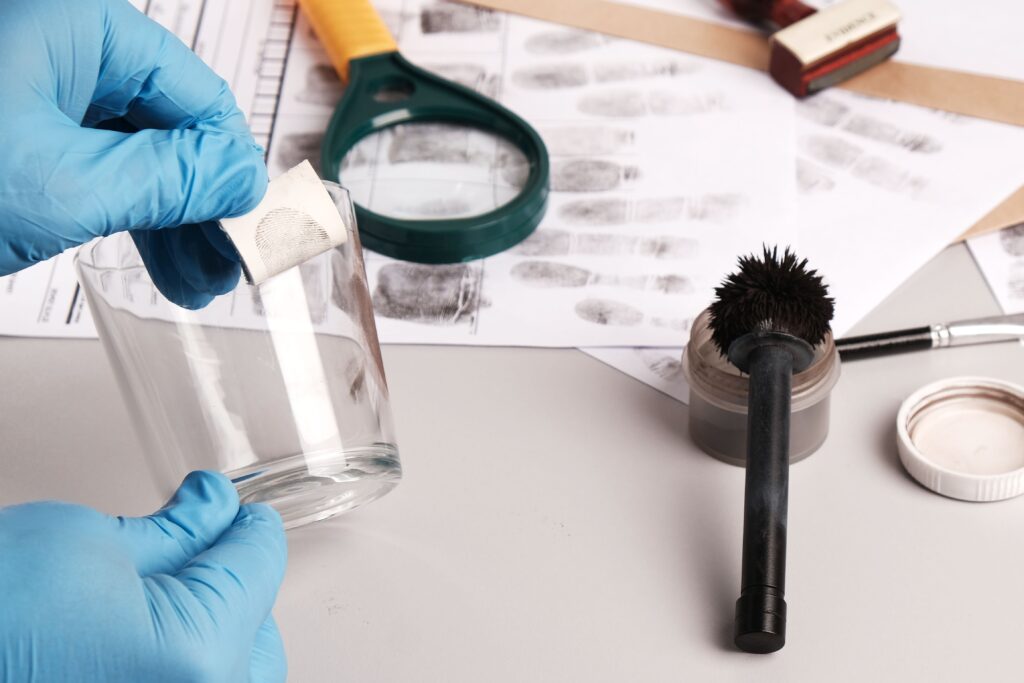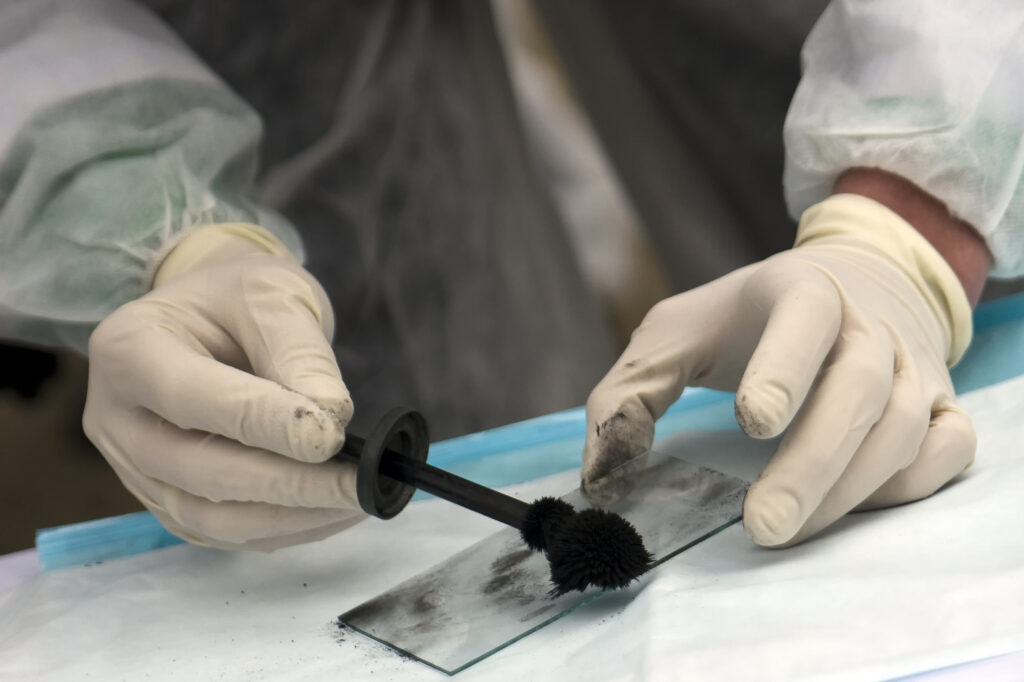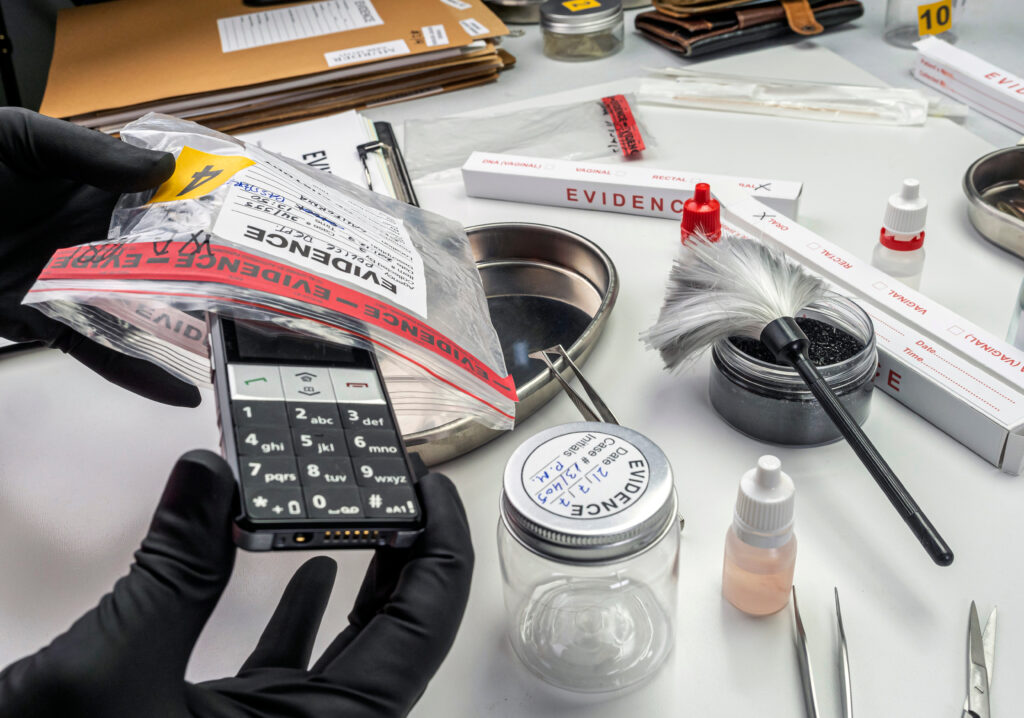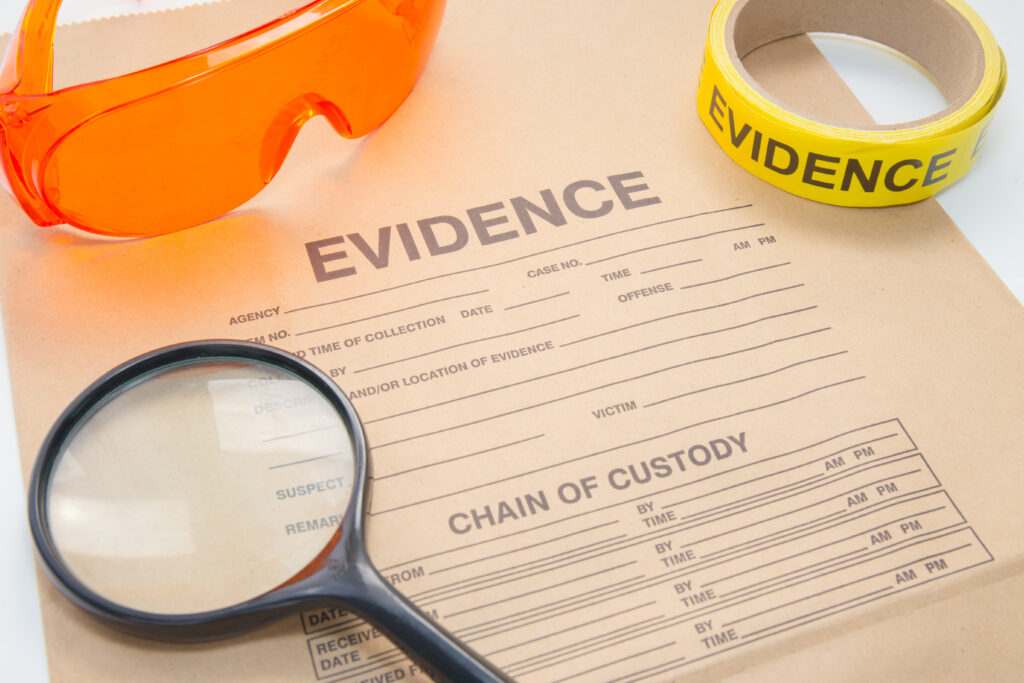In criminal cases, prosecutors routinely use forensic evidence to establish their legal burden of proof. However, in some instances, an experienced criminal defense attorney can challenge the admissibility of that evidence in court.
If you are currently facing one or more criminal charges, you need to have a knowledgeable criminal defense lawyer advocating for your interests. Your Santa Barbara criminal defense attorney can review the prosecution’s evidence and determine if you can assert one or more legal defenses. Your lawyer can also represent you aggressively during every stage of the proceedings, including during plea deal negotiations with prosecutors, trials, or sentencing hearings.
What Is the Prosecution’s Burden of Proof in a Criminal Case?

In a criminal case, the prosecution bears the legal burden of proof, which means they have the responsibility to prove the accused’s (defendant’s) guilt beyond a reasonable doubt. This burden is a fundamental principle of the criminal justice system and serves to protect the rights of the accused. Here is what you need to know about the prosecution’s legal burden of proof:
- Beyond a Reasonable Doubt — The burden of proof in a criminal case rests solely with the prosecution. In fact, the defendant does not need to take the witness stand at trial or satisfy any legal burden in the case. Rather, defendants are presumed innocent until proven guilty beyond a reasonable doubt. To obtain a guilty finding or conviction in the case, the prosecution has to establish each element of the criminal charge beyond a doubt that is based upon ordinary reason and common sense.
- Elements of the Offense — To meet their burden of proof, the prosecution must prove each element of the offense charged. This typically involves establishing the defendant’s identity, the commission of the prohibited act (the actus reus), and the requisite mental state or intent (the mens rea). The prosecution must present evidence that is credible, reliable, and admissible in court to support each element of the offense.
- Standard of Proof in the Courtroom —The prosecution carries out the burden of proof during trial proceedings, where they present evidence, call witnesses, and make legal arguments to support their case. Defense attorneys have the opportunity to cross-examine witnesses, challenge evidence, and present their own case to rebut the prosecution’s allegations.
- Jury Instructions — Judges instruct jurors on the burden of proof before deliberations begin. They explain the concept of reasonable doubt and emphasize that the defendant is presumed innocent unless the prosecution proves otherwise. The judge instructs the jurors to carefully weigh the evidence presented and to convict only if they are convinced beyond a reasonable doubt of the defendant’s guilt.
By imposing a high burden of proof on the prosecution, the legal system ensures that the court does not unjustly convict individuals of crimes and that the government exercises its power to deprive individuals of their liberty responsibly and fairly. The prosecution’s failure to meet this burden results in acquittals or the dismissal of charges, safeguarding the rights of defendants and upholding the principles of justice.
Types of Criminal Cases Where Prosecutors May Try to Use Forensic Evidence

Prosecutors use forensic evidence in a wide range of criminal cases to establish guilt, corroborate witness testimony, and provide scientific support for their arguments. Various types of criminal cases where prosecutors may rely on forensic evidence are as follows:
- Homicide — In cases involving homicide or murder, forensic evidence such as DNA analysis, ballistics, and autopsy reports can help prosecutors establish the identity of the perpetrator, determine the cause of death, and link the suspect to the crime scene or victim.
- Sexual Assault — Forensic evidence plays a crucial role in sexual assault cases, where DNA analysis of biological samples collected from the victim’s body or clothing can identify the assailant and corroborate the victim’s account of the assault.
- Burglary and Theft — In cases of burglary and theft, forensic evidence such as fingerprints, DNA, and trace evidence can be used to identify suspects, link them to the crime scene, and establish their involvement in the commission of the offense.
- Arson — Arson cases often rely on forensic evidence from fire investigators, who analyze burn patterns, debris, and accelerants to determine the cause and origin of the fire. This evidence can help prosecutors establish arson as the cause of the fire and identify suspects responsible for the crime.
- Robbery — In cases of robbery, authorities use such forensic evidence as DNA, fingerprints, and surveillance footage to identify suspects, link them to the scene of the crime, and corroborate witness testimony regarding the events surrounding the robbery.
- Assault and Battery — Forensic evidence, including medical reports, photographs of injuries, and expert testimony, can support allegations of assault and battery by documenting the extent and severity of the victim’s injuries and establishing the identity of the perpetrator.
- Drug Offenses — In drug-related cases, forensic evidence such as chemical analysis of controlled substances, drug paraphernalia, and surveillance footage can provide proof of illegal drug manufacturing, distribution, or possession, supporting the prosecution’s case against defendants.
- White-collar Crimes — Prosecutors use forensic accounting and financial analysis techniques to investigate and prosecute white-collar crimes such as embezzlement, fraud, and money laundering. This evidence can help prosecutors trace financial transactions, uncover hidden assets, and prove illegal activities.
By using forensic evidence in these various types of criminal cases, prosecutors seek to build strong cases against defendants and secure convictions in court. However, an experienced defense attorney can raise objections to certain evidence and keep it out of court.
How Prosecutors Use Forensic Evidence to Prove a Criminal Case
Prosecutors often rely on forensic evidence to prove criminal cases and secure convictions in court. Forensic evidence, which includes physical evidence collected from crime scenes and analyzed using scientific methods, plays a crucial role in establishing guilt or innocence. Prosecutors frequently use forensic evidence in the following ways:
- DNA Analysis — DNA evidence is perhaps the most powerful forensic tool that prosecutors use. DNA analysis can link suspects to crime scenes, victims, or evidence left behind, providing strong evidence of guilt or innocence. Investigators collect DNA evidence from blood, saliva, hair, skin cells, and other biological samples found at crime scenes. By comparing DNA profiles obtained from suspects to DNA profiles extracted from crime scene evidence, prosecutors can establish connections and build a strong case against the accused.
- Fingerprint Analysis — Fingerprint evidence is another essential forensic tool in criminal investigations. Fingerprints are unique to each individual, and investigators can lift these from surfaces such as weapons, vehicles, and other objects at crime scenes. By matching fingerprints found at the scene to those of suspects or known individuals, prosecutors can place suspects at the scene of the crime and establish their involvement in criminal activities.
- Ballistic Analysis — Ballistic evidence involves the analysis of firearms, ammunition, and projectiles recovered from crime scenes. Ballistic experts can examine firearms and ammunition to determine if they were involved in the commission of a crime, as well as analyze bullet trajectories to reconstruct shooting incidents. Ballistic analysis can provide crucial evidence linking suspects to crimes involving firearms, such as homicides and armed robberies.
- Trace Evidence Analysis — Trace evidence refers to small particles and materials transferred between individuals and objects during contact. Examples of trace evidence include fibers, hair, soil, glass fragments, and paint chips. By analyzing trace evidence collected from crime scenes and comparing it to known samples, prosecutors can establish links between suspects, victims, and crime scenes.
- Digital Forensics — With the increasing use of technology in criminal activities, digital forensics has become an essential tool for prosecutors. Digital evidence, such as emails, text messages, social media posts, and computer files, can provide valuable insights into suspects’ motives, actions, and relationships. Digital forensics experts can recover and analyze electronic evidence from computers, smartphones, and other digital devices to support criminal investigations and prosecutions.
How Does a Prosecutor Introduce Forensic Evidence at Trial?

In a criminal trial, prosecutors may introduce forensic evidence as part of their case to establish the guilt of the defendant beyond a reasonable doubt. Prosecutors typically introduce forensic evidence at trial as follows:
- Opening Statements — During opening statements, prosecutors may preview the forensic evidence they plan to present to the jury. They may describe the types of evidence collected from the crime scene, the methods used to analyze it, and how it supports their theory of the case. Opening statements serve to frame the evidence and provide jurors with an overview of what to expect during the trial.
- Witness Testimony — Prosecutors often call forensic experts and other witnesses to testify about the evidence collected and analyzed in connection with the case. Forensic experts, such as DNA analysts, crime scene investigators, and ballistics experts, may explain their findings, the techniques used to analyze the evidence, and the significance of their conclusions. Witness testimony helps jurors understand the relevance and importance of the forensic evidence that the prosecutor presents.
- Exhibits and Demonstrative Evidence — Prosecutors may use exhibits and demonstrative evidence to help jurors understand complex forensic concepts and make the evidence more tangible and persuasive.
- Chain of Custody Documentation — Prosecutors must establish the chain of custody — the documented record of the handling, storage, and transfer of evidence from the crime scene to the courtroom — to ensure the reliability and authenticity of the forensic evidence. They may introduce chain of custody documentation, such as evidence logs, custody transfer forms, and laboratory reports, to demonstrate that the evidence has been properly preserved and handled throughout the investigative process.
- Expert Reports and Documentation — Prosecutors may submit expert reports and documentation that forensic experts have prepared as evidence in the trial. These reports detail the findings, analysis, and conclusions the experts reached regarding the forensic evidence. Expert reports provide jurors with comprehensive information about the forensic evidence and support the prosecution’s arguments about the defendant’s guilt.
By presenting forensic evidence, prosecutors aim to build a compelling case against the defendant and convince the jury of their guilt beyond a reasonable doubt. However, a strong criminal defense lawyer can challenge certain types of evidence and argue for inadmissibility in court.
How to Challenge Forensic Evidence in a Criminal Case

When the prosecution introduces forensic evidence in a criminal case, defense attorneys often employ various strategies to challenge its reliability, accuracy, and admissibility in court. Here are several ways of challenging forensic evidence:
- Documentation — Defense attorneys may call their own expert witnesses to challenge the conclusions the prosecution's forensic experts have drawn. These experts can offer alternative interpretations of the evidence and highlight potential flaws or inconsistencies in the prosecution's analysis.
- Cross-Examination — During cross-examination, defense attorneys scrutinize the prosecution's forensic witnesses to expose any weaknesses in their methodology, credentials, or findings. By asking probing questions and eliciting concessions from the prosecution's witnesses, defense attorneys can undermine the credibility of the forensic evidence the prosecution has presented.
- Chain of Custody Challenges — Defense attorneys may challenge the integrity of forensic evidence by questioning the chain of custody — the documented record of the handling, storage, and transfer of evidence from the crime scene to the laboratory and, ultimately, to the courtroom. Any breaks in the chain of custody can cast doubt on the reliability and authenticity of the evidence.
- Laboratory Errors and Contamination — Defense attorneys may challenge the reliability of forensic evidence by pointing to potential errors, contamination, or mishandling that occurred during the collection, processing, or analysis of the evidence. This can include improper storage conditions, equipment malfunctions, or human error in the laboratory.
- Falsification or Misrepresentation — Defense attorneys may allege that the prosecution's forensic experts falsified or misrepresented their findings in order to bolster the case against the defendant. This can involve fabricating results, omitting contradictory evidence, or exaggerating the significance of the forensic findings.
- Limitations of Forensic Science — Defense attorneys may highlight the limitations and uncertainties of forensic science in general. They may argue that certain forensic techniques or methodologies are not as reliable or scientifically valid as they are purported to be, and therefore, the jury should not give them undue weight.
- Prejudicial Effect Versus Probative Value — Defense attorneys may argue that the prejudicial effect of certain forensic evidence outweighs its probative value — that is, its relevance and significance to the case. They may seek to exclude or limit the admission of forensic evidence that is more likely to inflame the jury's emotions or unfairly prejudice the defendant.

By challenging forensic evidence through these various strategies, defense attorneys seek to raise doubts about the prosecution's case and create reasonable doubt in the minds of the jurors regarding the defendant's guilt. Successful challenges to forensic evidence can lead to acquittals, reduced charges, or favorable plea agreements for defendants in criminal cases.
Talk with an Experienced Criminal Defense Lawyer Today
If you are currently facing one or more charges, an experienced criminal defense lawyer can be an invaluable help. Your attorney can fight for your legal and constitutional rights during every stage of the proceedings and pursue the best possible result on your behalf.